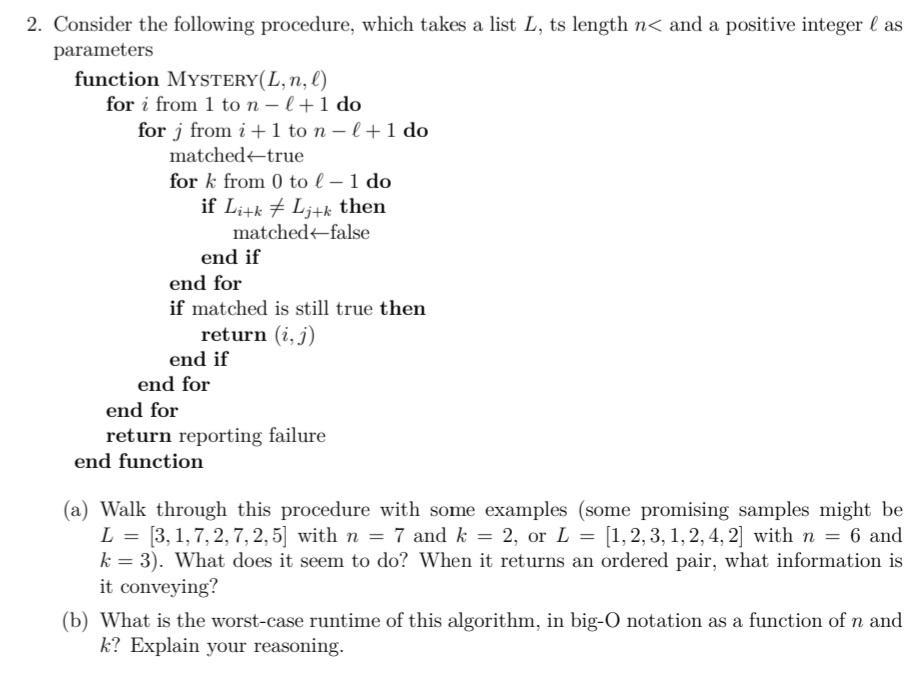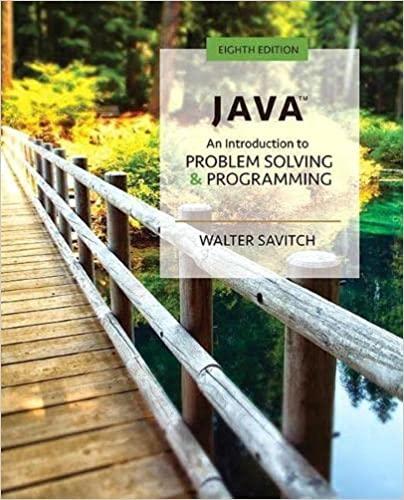Question
2. Consider the following procedure, which takes a list L, ts length n < and a positive integer l as parameters function MYSTERY(L, n,

2. Consider the following procedure, which takes a list L, ts length n < and a positive integer l as parameters function MYSTERY(L, n, l) for i from 1 to n - l + 1 do for j from i+ 1 to n-l+ 1 do matched-true for k from 0 to l - 1 do if Li+k Lj+k then matched-false end if end for if matched is still true then return (i, j) end if end for end for return reporting failure end function (a) Walk through this procedure with some examples (some promising samples might be L = [3, 1, 7, 2, 7, 2,5] with n = 7 and k = 2, or L = [1, 2, 3, 1, 2, 4, 2] with n = 6 and k = 3). What does it seem to do? When it returns an ordered pair, what information is it conveying? (b) What is the worst-case runtime of this algorithm, in big-O notation as a function of n and k? Explain your reasoning.
Step by Step Solution
There are 3 Steps involved in it
Step: 1

Get Instant Access to Expert-Tailored Solutions
See step-by-step solutions with expert insights and AI powered tools for academic success
Step: 2

Step: 3

Ace Your Homework with AI
Get the answers you need in no time with our AI-driven, step-by-step assistance
Get StartedRecommended Textbook for
Java An Introduction To Problem Solving And Programming
Authors: Walter Savitch
8th Edition
0134462033, 978-0134462035
Students also viewed these Programming questions
Question
Answered: 1 week ago
Question
Answered: 1 week ago
Question
Answered: 1 week ago
Question
Answered: 1 week ago
Question
Answered: 1 week ago
Question
Answered: 1 week ago
Question
Answered: 1 week ago
Question
Answered: 1 week ago
Question
Answered: 1 week ago
Question
Answered: 1 week ago
Question
Answered: 1 week ago
Question
Answered: 1 week ago
Question
Answered: 1 week ago
Question
Answered: 1 week ago
Question
Answered: 1 week ago
Question
Answered: 1 week ago
Question
Answered: 1 week ago
Question
Answered: 1 week ago
Question
Answered: 1 week ago
Question
Answered: 1 week ago
Question
Answered: 1 week ago
Question
Answered: 1 week ago
View Answer in SolutionInn App



